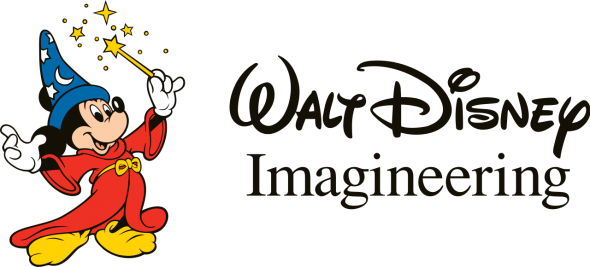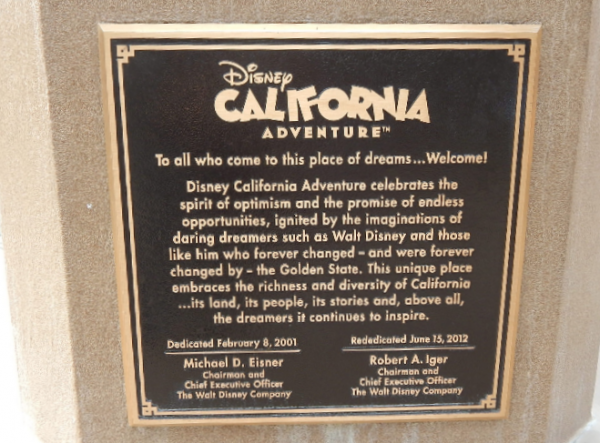The project as a whole had seven specific guidelines
The very best Disney designs and concepts are often driven by specific rules and ideology that are set beforehand. The WestCOT project would have continued that trend. Here are the seven principles that were supposed to be followed for the initial design of the theme park and beyond.
I. Project Unity: The park as a whole was intended to be more than a sum of its parts. Design was considered a big component to making that possible. Imagineers would create attractions and structures that complemented the surrounding area, so that the attractions, shops, restaurants and whatever else would blend together.
II. Integration: Disney intended to work closely with the Anaheim Commercial Recreation Area so that the surrounding community would also get a number of benefits if WestCOT was a big success.
III. A Dramatic Entry Sequence: The entrance, in WestCOT Center’s case Ventureport, was going to immediately immerse you in the experience.
IV. Parking on the Perimeter: The Imagineers wanted the resort to be able to hold tens of thousands of cars to handle all the people they anticipated would visit their parks.
V. Transportation Linkages: Ever since the Monorail (maybe even before), Disney has innovated when it comes to getting its guests around their parks. The intention was for WestCOT to continue that trend, in the methods laid out earlier in this article.
VI. Pedestrian Orientation: As any theme park fan knows, a visit to a Disney park tends to require a whole lot of walking. Disney wanted to make that process as pain free as possible.
VII. Diversity of Guest Activities: The Disney Imagineers were planning a wide variety of attractions and activities so that they could appeal to the broadest demographic possible.
Many of these guidelines were probably subconsciously followed for a lot of Disney theme parks, but they were specifically laid out for WestCOT. You can see by the plans laid out earlier in this article how these principals greatly influencing the initial designs of WestCOT Center and the Anaheim Recreation Area.
SpaceStation Earth... an eyesore?
The Master Plan for WestCOT was released publicly on May 8, 1991. On the surface level the whole thing seemed like a win for Anaheim. It would have led to over 25,000 new jobs and around $40 million in direct tax revenues for the city. However, the project had its share of detractors. Citizens of Anaheim were dreading WestCOT for reasons including SpaceStation Earth being an eyesore and increased traffic. Some local businesses were surprised to find that their buildings were part of what was supposed to be the Disneyland Resort. In fact, Disney would have needed Anaheim to acquire around 100 acres of land in the city.
Disney started facing some serious heat from a committee called the Anaheim Homeowners for Maintaining the Environment (“Anaheim HOME”), which was founded by local business owners Curtis Sticker and Bill Fitzgerald and rose to prominence in the spring of 1992. With their 1500+ members they did a lot of damage. For example, they set up a picket line in the Disneyland parking lot during Christmas of 1993, handing out leaflets explaining the downsides of WestCOT for Anaheim.
A really fascinating way they hurt Disney was by creating a scandal out of free Disneyland tickets that had been given out for a long time. For almost forty years, Anaheim city employees who worked in the Mayor’s office were offered free tickets to Disneyland. When Anaheim HOME found out about this, they argued that it was a form of bribery, influencing the local government to be in favor of adding another park which they would presumably also get free tickets to. As a result of what some say was a worthy outrage and some call a witch hunt, the free tickets for city employees went away.
There were also issues with freeways, carpool lanes and parking structures that Disney tried to address by going to the United States Congress for $400 million. That attempt didn’t end up being fruitful.
Disney vaguely addressed the problems they faced in an announcement that was released on December of 1991. It stated:
“[O]ur excitement about the decision to proceed with the Disneyland Resort is tempered by the realization that many hurdles remain. Developing a project of this magnitude in southern California is expensive and extremely complex.”
And:
“[A] variety of local and regional approvals are required and the fundamental economic feasibility of the project has yet to be proven.”
These problems might not have been insurmountable, but the abject failure of Euro Disneyland made things even more difficult. By 1992 Disney executives started making cuts. The Americas were at one point going to have a Hollywoodland section, but that was removed from the drawing board. Two years later things were even more dire, with Disney cutting the amount of new hotel rooms in half. By the beginning of 1995 the WestCOT project was completely dead in the water, to the chagrin of many Disney park fans clamoring for its debut.
Some WestCOT plans were transferred over to California Adventure
Disney's California Adventure was ultimately built in WestCOT's place, at a much-reduced cost of around $600 million. It included a number of elements planned originally for WestCOT Center. The team of Imagineers working on both projects was even largely the same. Still, many Disney fans were let down. Disney historian Jim Hill probably put it best:
"Conversely, wouldn't you be disappointed if you were to learn that -- after years of hype -- the same company had decided not to construct the elegant restaurant, but were opting instead to build a McDonalds on that site?"
The small budget and less ambitious concepts culminated in what was, for many, a disappointment. While it didn’t exactly open to rave reviews, Disney did manage to turn California Adventure around to become a fairly popular park - but only after a $1.1 billion expansion and remodeling program.
Based on what you’ve learned from this article, do you think you would have preferred WestCOT Center and the Anaheim Commercial Recreation Area to what we ended up with? Please let us know on our Facebook page and in the comments below!


Add new comment